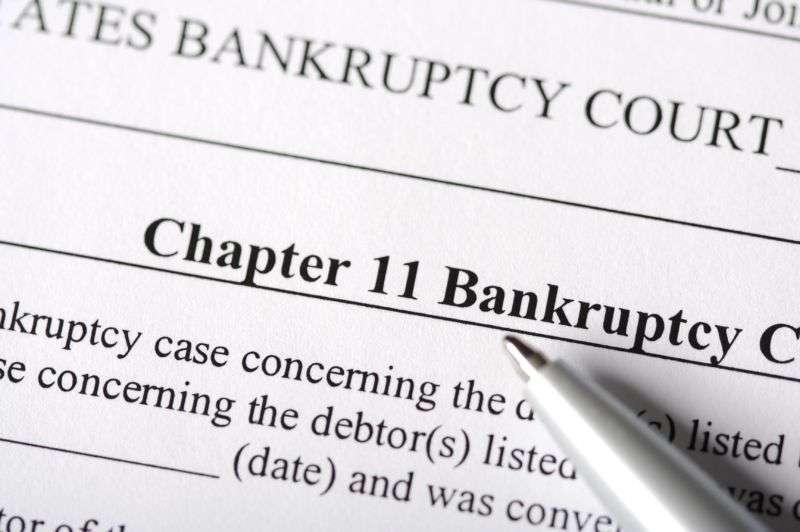
Windstream, ISP with 1 million customers, files for bankruptcy

Windstream—an Internet service provider in mainly rural areas—today filed for bankruptcy.
The bankruptcy was spurred by a court ruling from February 15 that could cost Windstream hundreds of millions of dollars. The company said the bankruptcy will help prevent negative impacts on customers.
Windstream filed petitions for reorganization under Chapter 11 of the United States Bankruptcy Code in US Bankruptcy Court for the Southern District of New York. Windstream considered other options, including appealing the court ruling, but company management and the board of directors “determined that filing for voluntary Chapter 11 protection is a necessary step to address the financial impact of Judge [Jesse] Furman’s decision and the impact it would have on consumers and businesses across the states in which we operate,” Windstream CEO Tony Thomas said in the bankruptcy announcement.
Windstream’s losing court battle was against hedge fund Aurelius Capital Management, “which had argued a two-year-old spinoff of the company’s fiber-optic cable network violated the covenants on one of its bonds,” which prohibited “sale-leaseback transactions,” The Wall Street Journal wrote today.
“Two weeks ago, US District Judge Jesse Furman ruled that Windstream violated the covenant on sale-leaseback transactions and awarded the hedge fund a judgment of $310 million plus interest,” the Journal wrote. “The battle highlights a growing practice among hedge funds of searching for instances where a company has violated bond covenants even though the issuer is healthy enough to continue to service and refinance its debt.”
Windstream has $5.6 billion in debt and “has been losing residential and business customers to cable and wireless companies for years,” the Journal noted.
Despite choosing not to appeal, CEO Thomas said that “Windstream strongly disagrees” with the court decision, and accused Aurelius of “engag[ing] in predatory market manipulation to advance its own financial position.”
“Windstream did not arrive in Chapter 11 due to operational failures and currently does not anticipate the need to restructure material operations,” Thomas also said. “While it is unfortunate that Aurelius engaged in these tactics to advance its returns at the expense of Windstream, we look forward to working through the financial restructuring process to secure a sustainable capital structure so we can maintain our strong operational performance and continue serving our customers for many years come.” Thomas called for government regulation of the “unregulated credit default swap marketplace.”
Windstream receiving federal funding
Windstream had 1,015,000 residential Internet customers as of September 30, 2018, down 2,400 from the previous year, according to an earnings report. Windstream also offers TV and phone service. Windstream, which also sells business and enterprise network services, reported revenue of $1.42 billion and net income of $41 million in Q3 2018. Windstream revenue was down 5 percent year-over-year, but its quarterly profit was an improvement over the net loss of $102 million the year before.
The Federal Communications Commission issued a statement on the bankruptcy today, saying it’s “pleased that Windstream has made clear that its reorganization in bankruptcy will not disrupt service to any consumers.”
Since 2015, Windstream has been receiving $175 million a year in FCC funding to bring Internet service to an additional 405,000 homes and businesses. Under the terms of that deal, Windstream has to finish deployment by the end of 2020.
Given that, FCC Wireline Competition Bureau Chief Kris Monteith said, “we must be vigilant in light of these events to ensure that the lifesaving 911 service and the voice and broadband connections that Windstream’s customers rely upon remain—and that the federal funds that Windstream receives through the Connect America Fund and other universal service programs are put to their appropriate use to connect rural and low-income Americans with high-speed broadband.”
Today, Windstream said it has obtained a commitment for $1 billion in financing from Citigroup Global Markets. “With approval from the Court, we will continue paying our employees, maintaining our relationships with our vendors and business partners and serving our customers as usual,” Thomas said. “We remain committed to providing critical voice and data services and ensuring customers realize the maximum benefit in transitioning to next-generation technology solutions and premium broadband services.”
Windstream offers gigabit fiber Internet to homes and small businesses in some areas, but its DSL offerings don’t meet modern broadband standards. The FCC’s latest Measuring Broadband America report analyzed Windstream offerings with advertised download speeds between 3Mbps and 12Mbps. It advertised upload speeds between 384kbps and 1.5Mbps. Windstream’s actual median speeds fell short of its advertised rates, according to FCC measurements in September 2017.
In 2015, we wrote about Windstream asking a potential customer in Nebraska for $383,500 in exchange for extending fiber a few miles to the customer’s business. The customer found another ISP that did the job for $42,000.
Windstream provides residential service in 18 states, namely Alabama, Arkansas, Florida, Georgia, Iowa, Kentucky, Minnesota, Mississippi, Missouri, Nebraska, New Mexico, New York, North Carolina, Ohio, Oklahoma, Pennsylvania, South Carolina, and Texas.




